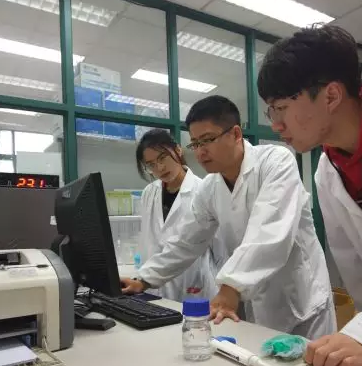Welcome to Taizhou Zhigao materials technology Co., Ltd!
Telephone: 13641587391
On May 24, the reporter learned that Zeng Jingbin, associate professor of China University of Petroleum (East China) School of science, cooperated with Zhang Dong, Professor of Army Medical University, and Yin Yadong, Professor of University of California Riverside, and made important progress in the research of magnetic / plasmon heterostructures. The related paper "synthesis of hydrophilic magnetic / plasmon heterostructures and application of multimode biological imaging" (direct synthesis of water dispersible magnetic / plasma heteronanostructures for multimodality biomedical imaging) was published on nano letters, an authoritative journal in the field of international materials. Professor Zeng Jingbin is the first / corresponding author of the paper, Professor Yin Yadong and Professor Zhang Dong are the co corresponding authors, and Professor Yan Zifeng provides important guidance. China University of Petroleum (East China) is the first signatory, and the research is supported by the National Natural Science Foundation and the basic scientific research business fees of the Central
Magnetic / plasmon heterostructure nanomaterials not only have the dual properties of Optics and magnetism, but also have the synergistic effect of two centers and the electronic coupling effect of the interface between the two components. They are very suitable for multimode imaging, catalysis, biosensor and other fields. At present, although there are some reports about magnetic / plasmon heterostructure nanomaterials, their synthesis is usually carried out in organic media. In order to use the materials in biological or environmental systems, they usually need to be surface modified to achieve phase transfer. On the one hand, due to the strong interaction between the oil phase ligands and the metal surface, it is difficult to completely replace them in the phase transfer process, and the residual organic ligands will produce strong biological toxicity, which will also affect the catalytic activity of the materials; on the other hand, the inclusion of organic ligands on nanoparticles is not conducive to the control of the epitaxial growth of new nuclei, thus constraining the controllability of their morphology, size and structure, It is difficult for the subsequent particle size control and other metal epitaxial growth.
In response to the above challenges, Zeng Jingbin research group of Professor Yan Zifeng's team, in collaboration with Yin Yadong and Zhang Dong's team, developed a method to synthesize Fe 3O 4-noble metal (gold, silver and palladium) heterogeneous nanomaterials in aqueous phase. By taking Fe 3O 4 nanocrystals as seeds and using the divalent iron ion on the surface of Fe 3O 4 as reductant, the precursor of metal salt was reduced to in situ These small metal seeds, like keys, open the door of aqueous phase synthesis. The metal salt added subsequently is continuously reduced and deposited on the existing seeds under the action of sodium citrate. Under the effect of Oswald ripening, large particles of metal are formed, and finally ferro 4-noble metal heterogeneous nanomaterials are formed.
Compared with the synthesis method based on organic solvent, because the synthesis method is carried out in aqueous solution, the particle size and morphology of the synthetic material can be controlled by epitaxial growth method, and the controllable preparation of more complex heterostructures can also be realized, such as the preparation of AgPt alloy-fe3o4, Au core @ PD shell-fe3o4, Au shell-fe3o4 and other heterostructures. The researchers further applied the synthesized heterogeneous nanomaterials to MRI / CT / PA / OCT multimodal biological imaging. Compared with the commercial contrast agents, the imaging effect of the composite nanomaterials has certain advantages and shows a good application prospect.
The reviewers highly appraised the research work, and thought that this method of water phase synthesis has good universality. The synthesized heterogeneous nanomaterials not only have high application potential in biological imaging, but also are expected to be more widely used in catalysis, sensing and other fields.
Nano letters is an important academic journal of the American Chemical Society, with the latest impact factor of 12.08. It mainly reports the latest important research results in the field of international nano science and technology, and has a high impact in the field of materials and chemistry.
Zeng Jingbin's research group mainly focuses on the controllable preparation of metal nanomaterials, quantum dots and carbon dots and their application in the optical sensing of environmental pollutants and bioactive molecules. Over the past five years, more than 20 SCI papers have been published in nano letters, advanced functional materials, analytical chemistry, chemical communication, ACS applied materials and interfaces, nanoscale, sensors and actuators B, nano micro letters and other academic journals.